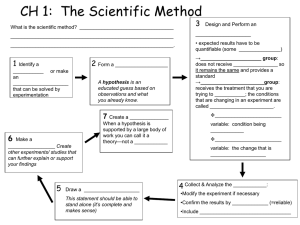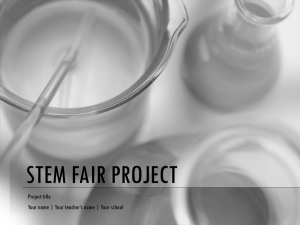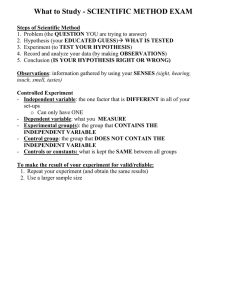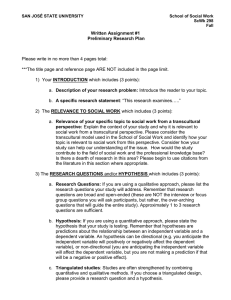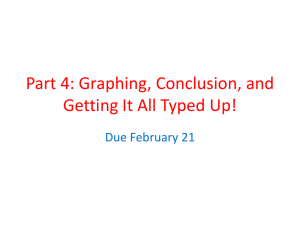Objective: Scientific Method definition of science as "knowledge" and the methodos,
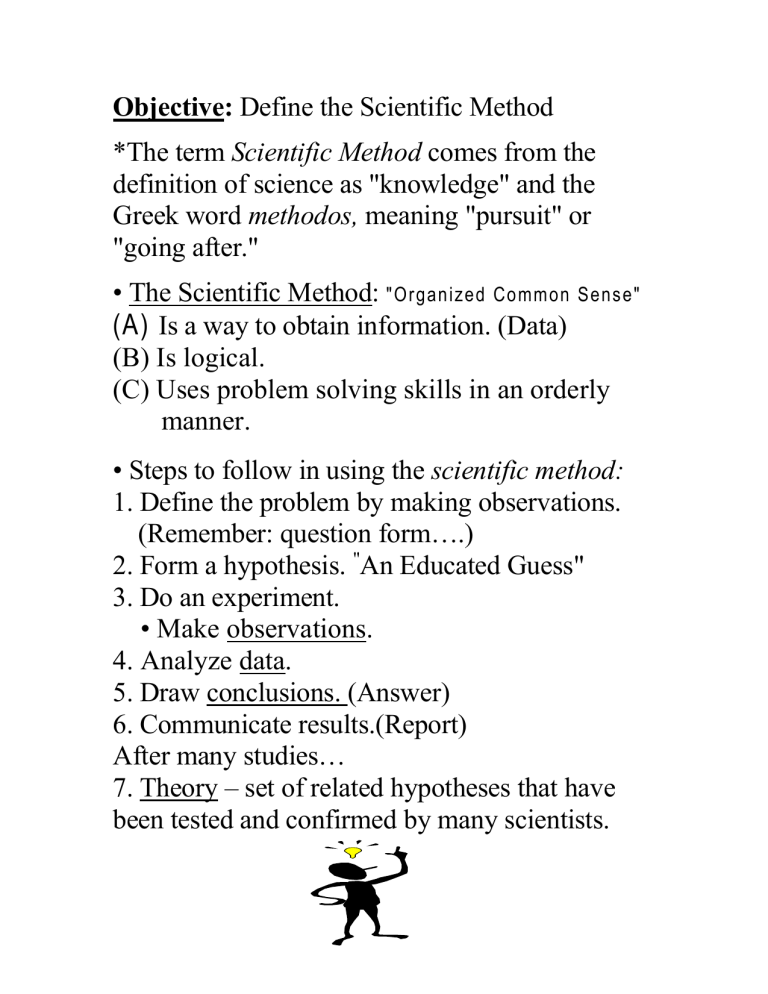
Objective: Define the Scientific Method
*The term Scientific Method comes from the definition of science as "knowledge" and the
Greek word methodos, meaning "pursuit" or
"going after."
• The Scientific Method:
"Organized Common Sense"
(A)
Is a way to obtain information. (Data)
(B) Is logical.
(C) Uses problem solving skills in an orderly
manner.
• Steps to follow in using the scientific method:
1. Define the problem by making observations.
(Remember: question form….)
2. Form a hypothesis. " An Educated Guess"
3. Do an experiment.
• Make observations.
4. Analyze data.
5. Draw conclusions. (Answer)
6. Communicate results.(Report)
After many studies…
7. Theory – set of related hypotheses that have been tested and confirmed by many scientists.
Objective: Identify controls &variables in an experiment.
• Experiment - an organized procedure or method to test a hypothesis.
• Control - a standard for comparison
• No variable (Ex. plain water)
• Constants - factors that do not vary (do not
change) in an experiment.
• They must remain the same.
(Ex. brand, height....)
• Independent variable - factor changed by the experimenter (the factor tested) a good experiment tests one variable.
• Dependent variable - factor that depends on the
value of the independent variable (a result measured)
• When graphing:
Y - axis
Dependent
variable
here
X- axis
Independent variable here
*Facts about controlled experiments:
1. The more times you do an experiment, the more dependable the results.
2. The larger the size of the experimental group,
the more accurate the results.
3.
Your hypothesis (educated guess) should be as
specific
as possible.
4. The procedures you use in an experiment must be as quantitative as possible.
5. All controls in an experiment must be kept the same. *No control experiment invalid.
6. Only one variable can be tested in an experiment, otherwise the experiment becomes invalid.
Goal: Demonstrating observation as a tool for solving problems.
• Observations are:
• Information (data) gathered by using our
senses. - seeing, hearing, touching, smelling,
tasting.
• There are 2 kinds of observations:
1. Quantitative
2. Qualitative
• Quantitative Observations
• About numbers
• A measurement
• How much? (quantity)
Example: "20 drops" of water, width, length,
mass, temperature
• Qualitative Observations
• Anything but numbers
• Describe a property or characteristic (quality)
Example: Color, shape, form of matter (solid,
liquid, gas)
